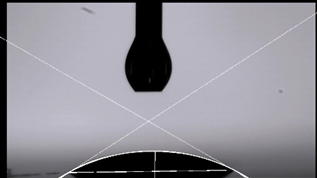New Bio-based Substrate Wetter for Aqueous Systems
- Andy Richards

- Oct 8
- 3 min read
Updated: Oct 9
Introduction
In the coatings market there is a push towards greener alternatives to “fossil fuel“ based products and standard market products which are used as wetting agents are under the spotlight because of labelling concerns. Two of the main products in this area are the ethoxylated acetyleneic diols and Fluorosurfactants.
Ethoxylated acetyleneic diols carry the following hazard labels:
H317 – May cause an allergic skin reaction
H412 – Harmful to aquatic life with long-lasting effects
Fluorosurfactants, commonly referred to as "forever chemicals," raise concerns due to their bioaccumulative nature and environmental persistence.
Another product that is utilised in the water based coatings market as a wetting agent are the sulphosuccinate type products. These are extremely good products but have a disadvantage of being high foaming.
Lankem through their innovative products, especially the BioLoops have investigated whether these types of products could be suitable substrate wetting products, low foaming and neutral labelling.
Wetting in Water-Based Coating Systems
In water-based coating systems, the high surface tension of the medium can be an issue in the wetting of the substrate. When a drop of liquid is placed on a surface, it can either:
Spread over the surface – indicating excellent wetting
Forms a stable drop – indicating poor wetting
Figure 1

The ability to wet a surface depends on the surface tension of the liquid and the critical surface tension (CST) or surface energy of the solid. CST is defined as the surface tension at which a liquid forms a contact angle close to zero—meaning it spreads over the solid.
For example:
Glass (CST > 70 dynes/cm) is easier to wet than
Polypropylene (CST ≈ 28 dynes/cm)
To wet a substrate quickly and effectively, a surfactant is required to reduce the surface tension and overcome the surface energy of the substrate. Surfactants achieve this by adsorbing at the air-water interface and forming a monolayer, which reduces the cohesive forces between the liquid molecules.
Contact Angle Measurement
One quantitative method to assess wetting is by measuring the contact angle ϴ (Theta) of a liquid drop on a surface. The contact angle is the angle formed at the three-phase boundary where liquid, gas, and solid intersect.
There are three different forces acting on this three-phase contact point between solid, liquid and vapour as shown in Figure 2a.
Figure 2a – Three-Phase Contact Point

ϴ – Contact angle
γ_lv – Surface tension of the liquid
γ_sv – Surface tension of the solid (surface free energy)
γ_ls – Interfacial tension between solid and liquid
Youngs equation describes the three phase contact in the following manner:
Cos ϴ = ϒsv - ϒls
ϒlv
Note: Young’s equation assumes an ideal, flat, smooth surface with no interaction between the liquid and substrate. While models exist to account for surface roughness, this study assumes a homogeneous surface.
One common method for measuring contact angles is the sessile drop technique, which involves capturing an image of a single drop on a surface and analyzing it using software. The drop is released through a fine needle and allowed to fall under gravity onto the substrate, as shown in Figure 3.
Figure 3

Figure 4

The instrument that we utilised in this study was the First Ten Angstrom FTÅ 200 goniometer.
Technical Work
0.1% aqueous solutions of various products were prepared, and contact angles were measured on several substrates using the method described. Foaming studies were also conducted to measure foam height and volume over time.
Contact Angles
Substrate | Surface Energydynes/cm | Lansperse BIO691 (°) | Lansperse SUN10 (°) | Lanwet JH1 (°) |
|---|---|---|---|---|
Acetal | 35 - 37 | 39.6 | 26.5 | 29.2 |
Acrylic | 38-40 | 43.4 | 29.8 | 30.1 |
Aluminium | ~500 | 41.9 | 31.4 | 27.6 |
Copper | 1100 - 1300 | 27.6 | 24.9 | 17.8 |
Polypropylene | 30 -32 | 61.2 | 41.6 | 27.8 |
PTFE | 18 -20 | 62.6 | 48.4 | 35.4 |
Nylon 66 | 42 - 44 | 23.2 | 21.8 | 18.2 |
Stainless | 700 - 1100 | 47.4 | 35 | 35.6 |
Glass slide | 70 - 100 | 26.4 | 15.8 | 15.8 |
Foaming Results
Foam Height (cm)
Product | 0 min | 1 min | 5 min | 10 min | 15 min | 20 min |
|---|---|---|---|---|---|---|
Lansperse BIO691 | 2 | 0.1 | - | - | - | - |
Lansperse SUN10 | 4 | 1.5 | 0.9 | 0.5 | 0.3 | 0.2 |
Lanwet JH1 | 18.3 | 18.3 | 8.7 | 7 | 6.2 | 6 |
Foam Volume (ml)
Product | 0 min | 1 min | 5 min | 10 min | 15 min | 20 min |
|---|---|---|---|---|---|---|
Lansperse BIO691 | 20 | 1 | - | - | - | - |
Lansperse SUN10 | 40 | 15 | 9 | 5 | 3 | 2 |
Lanwet JH1 | 183.3 | 183.3 | 86.7 | 70 | 61.7 | 60 |

Lansperse BIO691 – Acetal (39.6°)

Lansperse SUN10 – Acetal (26.5°)

Lanwet JH1 – Acetal (29.2°)
Results and Conclusion
Lansperse SUN10, the sunflower-based BioLoop, demonstrated superior substrate wetting performance, with consistently lower contact angles across all tested substrates compared to the soy-based alternative.
When compared to the standard sulphosuccinate (Lanwet JH1), Lansperse SUN10 showed comparable wetting properties but with the added benefit of very low foam generation. Additionally, the favourable labelling of Lansperse SUN10 makes it a compelling choice for use as a substrate wetter in a wide range of coating applications.
Product Links




Comments